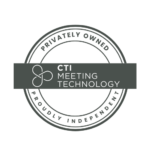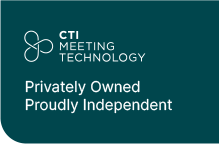Registration is one of the key parts of your event. After working on your event for months and organizing exciting sessions and speakers, you want to share it and get as many registrants as possible.
Ideally, your marketing and promotion efforts are enough to bring in all the registrations that you need, but that never happens in real life. Your attendees have busy lives and might need reminders to join your event.
Additionally, payment is not easy when your attendees are from different parts of the world. Are all types of cards accepted? Is bank transfer an option? Those are some of the questions you must ask yourself as an organizer to ensure your attendees’ experience is hiccup-free when paying for their tickets. Having a system that automatically updates payment status helps organizers get an overview of the whole process and get in touch with any registrants who haven’t paid yet.
Luckily, there are some strategies you can apply to draw in more registrations and make the overall process smoother for both attendees and staff. Keep reading to learn more about these foolproof hacks to elevate meeting registration.
Hack #1: Offer a User-Friendly Registration Interface
Your attendee journey begins with the registration page. A smooth, intuitive registration experience encourages sign-ups, as opposed to having to go through many steps and pages to reach the payment step. Our highly digital society now expects seamless online interactions, so a well-designed registration is no longer an option but a necessity.
Think of your registration form as the front door to your meeting. Would you want it to be welcoming and easy or frustrating and difficult? The right approach can improve conversion rates, ensuring potential attendees complete their registrations effortlessly without external help.
What to do:
- Ensure Your Registration Platform is Mobile-Friendly: Most attendees will rely on their phones to register, as it’s an easy and accessible device they can use from anywhere. That’s why your registration platform must be fully responsive and optimized for mobile, just like it would work on a laptop. A registration form that’s not optimized will have slower load times, difficult navigation, or formatting issues, which can lead to abandoned registrations.
- Simplify Your Form: No one wants to spend 20 minutes filling out a registration form. A long, unstructured document with unnecessary fields can cause frustration and lead to abandonment. To make it easier, break up your form into clear, manageable sections and use progress indicators to show attendees how far along they are in the process. If possible, you can also offer the option to skip sections and complete them later, allowing attendees to complete longer documents at their own pace.
- Use Smart Defaults: Prepopulating fields with data already entered is a great way to save your attendees some time. Features like address auto-completion, drop-down selections, and single sign-on (SSO) options can help streamline the registration experience whenever it’s possible to use them.
- Provide Clear Instructions: Nothing is more infuriating than submitting a form and receiving a generic error message. Ensure that the instructions are clear enough to fill the form without any issues, and if an attendee makes a mistake, ensure the error message is specific and helpful, guiding them on how to correct it. For example, instead of saying, “There’s one error in your form,” you can use, “Enter a valid email address (e.g., example@example.com” which can make a huge difference.
- Offer Multiple Payment Options: The last step of registration is also the most important, and it should be as smooth as possible for attendees. Offering numerous payment options, including credit cards, bank transfers, or digital wallets like PayPal, can prevent last-minute drop-offs. Be aware of the most-used payment methods in other countries, especially if a significant percentage of your audience comes from abroad.
Hack #2: Automate Confirmation Emails and Payment
A seamless registration process doesn’t end once the attendee submits their details. If confirmations are delayed or payment issues arise, registrants may become anxious and start bombarding your team with emails. On the staff side, manually handling payment confirmation and registration details is the perfect recipe for inefficiency and mistakes. Automating confirmation emails and payment processing ensures a more efficient process and frees your team to focus on more time-pressing tasks. Here’s what your registration system should have for effortless payment processing:
- Once attendees register, they should receive an automated confirmation email with all relevant event details. Personalized emails, including their first name, and tailoring the information provided based on their registration type enhance the attendee experience.
- Make sure that your system automatically generates and sends a proper payment receipt, including all required billing information, making it easy for attendees to expense their registration fees if needed.
- Not all attendees complete their registration in one go. Automated follow-up emails are key to reminding them to finalize their registration before the deadline. Make sure these are well-timed with a clear call to action, and link to the payment step.
Hack #3: Tailor the Registration Experience
Not all attendees are the same, so one-size-fits-all forms might not be the best way to approach registration. By segmenting your audience according to their role, you can tailor the registration forms and avoid unnecessary questions. This keeps the registration forms concise, relevant, and user-friendly, leading to higher completion rates.
Implement forms with conditional logic, showing specific questions based on previous answers. For example:
- If someone registers as a speaker, the form can display fields for their session title, bio, and headshot.
- If they choose the exhibitor role, they’ll fill out fields regarding booth preferences, sponsorship levels, and equipment needs.
- General attendees will only see standard registration fields to avoid confusion.
By tailoring these forms, you collect high-quality data. This allows you to later send targeted communications and personalize their event experience with suggestions based on their specific role or interests.
Hack #4: Simplify Group Registrations
Attending a conference as a part of an organization or delegation is common – such as a company sending a team or a university sending a group of researchers to attend sessions. Group registrations are a way to simplify the registration process for multiple people, but without the right system in place, it can become a challenge.
However, offering a group registration option not only makes life easier for teams handling multiple registrations, but you can also boost attendance by making it more appealing for organizations to send large groups. Here are some tips to streamline event group registration:
- Instead of requiring each person to register individually, allow one individual to complete the process for an entire group. This saves time and ensures a seamless experience for companies or institutions managing multiple attendees.
- Similarly, you can allow one payment for the group instead of having each attendee pay separately, generating a single invoice for the organization.
- Incentivize organizations to send more attendees by offering group rates or discounts for bulk registrations.
- In many cases, the person registering a group might not have all the attendee details available when they register. A flexible registration system allows them to edit later, add names, or update job titles to ensure accurate information.
- After a group registration is complete, automate confirmation emails for the person registering the group as well as each attendee. This ensures that every participant has all the necessary details to attend the meeting.
Hack #5: Collect and Analyze Real-Time Registration Data
But event registration isn’t just about getting people to sign up for your upcoming event. The data obtained can reveal key insights about your audience, helping you refine your marketing strategy and logistics.
- Monitor Registration Trends in Real Time: Track sign-ups across different categories, including attendee type, region, time of day (when people are most likely to sign up, accounting for time difference), and sources to identify which marketing channel drives the most registrations.
- Refine Your Marketing Strategy: Analyze the data obtained and tweak your marketing strategy to suit your attendees’ needs. For example, if one promotional channel (e.g., LinkedIn) brings in the most registrations, you might want to increase this budget. Even if the registration process is already closed, humans are creatures of habit, so you can use all this information for future events.
- Adjust Event Logistics: Are you noticing increased attendees from one industry? If possible, add more relevant sessions to the meeting agenda or schedule the sessions available to accommodate these attendees. Low exhibitor registrations? Consider offering a discount or delivering a targeted outreach campaign. Tailoring to everyone’s needs is impossible, but making an effort and going out of your way to accommodate as many attendees as possible will improve the event experience!
Hack #6: Drive Registrations by Creating a Sense of Urgency
Creating a sense of urgency is one of the most effective ways to increase early registrations. When attendees feel they might miss out on a great deal, they’re more likely to commit. Many industries use this technique; think about Black Friday deals. Even if the discounts are not huge, the sense of missing out on the deal will push some people to rush and register.
How to effectively do it:
- Offer Early-Bird Discounts: Those who register early should have a benefit. Create tiered pricing that rewards each registrant, including a deadline that will push attendees to register sooner rather than later. For example:
- Super Early-Bird (30% off) – Ends (Date)
- Early-Bird (15% off) – Ends (Date)
- Standard Pricing – Final Deadline
- Use Scarcity Messaging: Seeing a countdown clock on a website or receiving a message like, “Only 1 day to save 15%!” triggers a psychological response to act fast. Take advantage of that, and use scarcity messages, including countdowns on your website and social media, to encourage faster action.
See that your Registration Management system allows a tiered pricing system for a seamless and efficient process.
Hack #7: Prioritize Data Security and Compliance
When attendees register for a conference, they share personal details, payment information, and professional credentials. With cybersecurity threats on the rise, organizers must be careful while handling all this data. A data breach or failure to comply with current laws can result in legal consequences and damage your event’s reputation. Beyond legal compliance, strong data security practices help build trust with your participants. Ensure your Registration Management system uses secure encryption, adheres to GDPR guidelines, and clearly communicates data usage beforehand.
At CTI, we prioritize data security with robust encryption, GDPR compliance, and other data protection standards such as Multi-Factor Authentication (MFA) for admin access.
Wrapping Up…
The registration process can make or break an event: it’s the moment of truth where potential attendees decide whether they want to spend time and money attending your meeting or not. Even though technology can help, efficient conference registration isn’t only about selecting the right software but creating a seamless experience that benefits attendees and planners. From user-friendly interfaces to automated confirmations and data-driven insights, these registration hacks can transform how you manage your events.
Ready to implement these strategies? Book a call with our sales team today to learn how CTI’s Registration and Membership system can help you manage seamless, secure, and successful registrations. 👉 Schedule a Demo Now





